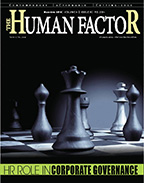K NARPAT SINGH HR HEAD, JRE GROUP OF INSTITUTIONS Peeling the layers K Narpat Singh (HR head, JRE GROUP of Institutions) says the delicate balance of matching expectations of a candidate with the budget is a challenge for HR Issue Date - 01/03/2013 |
 Q. Recruitment is about encouraging potential employees to apply whereas selection involves rejection of the unsuitable candidates. Do you agree? Q. Recruitment is about encouraging potential employees to apply whereas selection involves rejection of the unsuitable candidates. Do you agree?A. No. Recruitment is about drawing and identifying candidates who appear to have the right ‘fit’ for a vacancy. Selection involves peeling the layers to identify a ‘best fit’ candidate from amongst the choices while looking at culture fit and budget. Successful hiring is all about least time required for the selected candidate to ‘hit the ground running’. Choice of suitable candidate and a robust on-boarding process are imperative for this to happen. Q. While selecting prospective candidates, how do you access the skills, knowledge and attitude required to help the organisation achieve its objectives? A. Careful study of resume, identification of areas that the interviewer wishes to focus on, and skilful conduct of the interview are critical to objective and realistic assessment of obtaining levels of knowledge, skills and attitude in a candidate. A composite team of interviewers each with a dedicated focus on pre agreed areas does work. Further, trained interviewers usually are more effective. For a candidate to cooperate with the interview process, putting him at ease and getting him ‘ready’ for participating wholeheartedly is a necessary skill that the interviewer must possess. Q. Is there a formula you follow to bring new experience and ideas into business? A. Yes, the enterprise must be truthful about being open to dissent and having an ability to listen. Most profess to be so inclined but usually foster the opposite environment. It is known that mavericks need to be handled tactfully and they add value to the organisation if mentored and supported ably. Such talent is abundant. The questions are – are we capable of taking it on-board and leveraging the potential, or are we merely saying so while playing to the gallery. The maverick will soon be bored and will ease out himself from an environment which does not excite him. Q. How do you ensure selection procedure is effective while keeping the costs down? A. Money is a driver when candidates switch jobs. The delicate balance of matching expectations of a candidate with the budget of the internal stakeholders is a given challenge to HR professionals. However, what are the intangibles which would add to the candidate’s job satisfaction and engagement are intrinsic to the perceived image and spoken reputation of a brand or organisation. Highlighting these subtly by HR team members in the course of hiring-related interactions does make a difference. It is not about blatantly pushing these but a gentle ‘soft sell’ while appealing to the candidate’s sense of reason. This usually works in drawing good candidates nearest to or matching the requirement for any vacancy. |
Q. How would you compare internal recruiting with external one, in terms of effectiveness? A. Internal job postings serve as a motivator and have well known advantages such as no hiring cost, lesser time for induction and settling down. However, recruiting from the external environment carries potential of offering a wider choice and better fit. Effective mapping of skills and aspirations of employees is critical to the success of internal recruiting. The former should not be at the cost of the latter. A square peg in a round hole must be avoided at any cost. Design of performance appraisal documents, and training of appraisers and appraises are critical for correct recording of skills, aptitude and identified potential of any employee for these to be utilised better. Process for periodic retrieval of such information also needs to be efficient. Another cost effective method is through employee referral schemes. Q. How do you make new recruits understand the purpose of a vision supported by values as a focus for corporate strategy? A. The key to smooth settling down within the culture hinges on a warm suitably paced induction and probation process. Alignment with the mission and vision is critical and is best done by a sufficiently senior person in the HR team within the initial few days. Discrete observation and support by colleagues, supervisors, HR and periodic interaction with a mentor make this process more effective. Q. Have you faced a situation where applicants faked their qualification or experiences just to get the job? A. Yes. Once. This was soon detected by our ‘Ref Check’ process and the probationer was asked to leave. Q. How do you do competency analysis and how is it different from what others do? A. A mix of psychometric assessment and careful study of resume and its verification in the course of the interview does meet the purpose. Each organisation does usually figure out what works best in its context. Q. Motive of different candidates separates chaff from the grain. Please elaborate on this. A. Yes, the motives for each candidate for any opportunity at each organisation are different. Identifying these is a responsibility of the interviewer and pitching the opportunity accordingly is a skill. Only then will the candidate overcome dilemma and decide to accept the offer without much problem. Separating the grain from chaff is not a function of assessment of motivation of various candidates. The undesirable traits will anyway not be acceptable to the employer. |
Shishir Parasher
|
|
|



